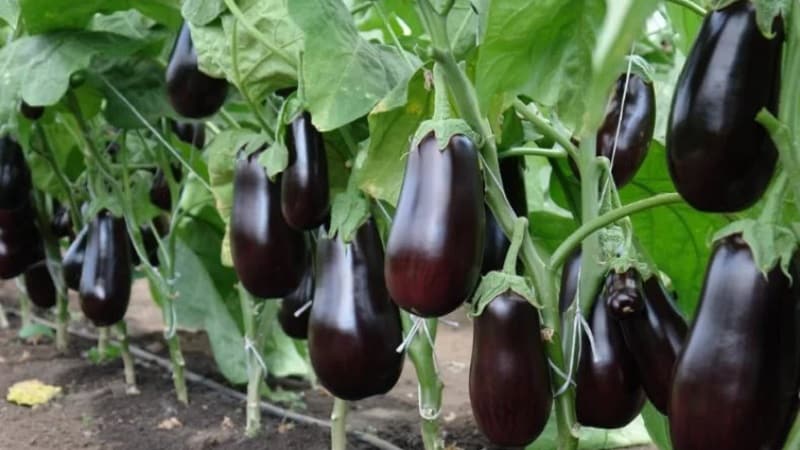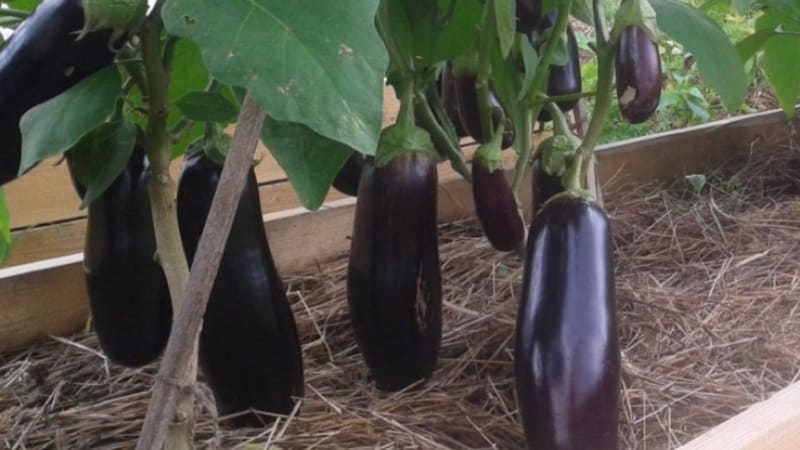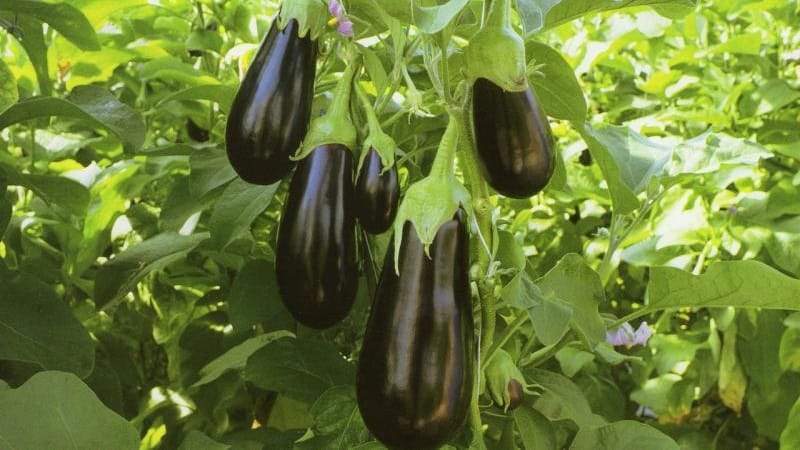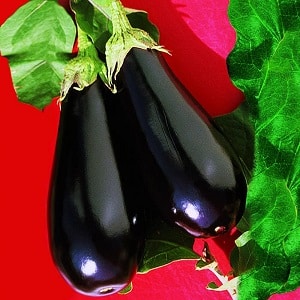What is good about the Epic eggplant variety and why it is worth growing
“Little blue” eggplants, as many call them, are welcome guests on our table. In addition to the fact that they have a piquant taste, eggplants have many beneficial properties. They contain vitamins group B, vitamin A, many minerals - potassium, phosphorus, calcium and others. In addition, it is useful for people with cardiovascular diseases, increases the contractility of the gastrointestinal tract (gastrointestinal tract), and has an anti-atherosclerotic effect.
Among the many different varieties, Epic is distinguished. Read about its features and cultivation rules in the article.
Description of the eggplant variety
The Epic eggplant variety was developed by Dutch agronomists in 2005. It adapts well to various living conditions, and is therefore suitable for cultivation in regions with different climatic conditions.
Hybrid Epic f1
Early ripening hybrid. Suitable for cultivation in greenhouses and open beds. The first fruits begin to taste approximately 60-65 days after planting the seedlings.
Distinctive features (+photo of the variety)
The fruits of the Epic F1 variety are notable for their lack of bitter taste in fresh and cooked form. Epic eggplants also have an attractive appearance: this is a big plus for those who grow crops for sale.
Photo of eggplant Epic f1:

Characteristics of bushes and fruits, taste, yield
This variety is characterized by the following parameters:
- the height of the bushes reaches 1 m;
- spreading bushes;
- the bushes must be tied up, otherwise they will break off under the weight of the fruit;
- there are thorns on the calyx of the eggplant;
- the fruits have a standard appearance, somewhat thickened;
- rich taste without bitterness;
- inside the fruit is white with a yellow tint and with a small number of seeds;
- Eggplant length up to 22 cm, diameter up to 10 cm;
- The yield is high, from 1 m² you will collect up to 6 kg of eggplants.
How to grow this variety yourself
Both experienced gardeners and beginners can grow this variety on their own. To grow the Epic f1 eggplant variety, you will need to purchase seeds and fertilizers, grow seedlings, transplant them to the plot, harvest and enjoy your labors in various dishes. More details about each stage.
Growing seedlings (preparing seeds, soil, planting, care, etc.)
Since this is a hybrid, only purchased seeds are used; you cannot prepare them yourself from your own harvest. Seeds are sown in the first and second ten days of February.
Stage 1. Purchased seeds require preparation before planting: treat with a two percent solution of potassium permanganate and water at a ratio of 2 g per 100 ml. The seeds are dipped in a solution of potassium permanganate for 20 minutes. After the procedure, you need to rinse the seeds in running water and dry. It is better to dry on cotton material; the seeds will stick to the paper and if you try to remove them, you can destroy their structure.
Stage 2. Preparing containers and soil for seedlings. Prepare individual cups, plastic containers with lids or boxes. Fill up the soil. You can mix part of the soil where the seedlings will move with sand and fertilize it with special seedling agents. Or use soil for seedlings from the store.
You can learn how to choose seeds for planting tomatoes. find out here.
Stage 3. Planting seeds. It is necessary to moisten the soil with warm water, immerse the seeds to a depth of 1.5 cm at a distance of 2 cm from each other. No more than two seeds are planted in individual cups. After planting, cover with cellophane and place in a warm place (about 25 C°) in a well-lit place. When the sprouts appear, after 7-10 days, remove the film and place the seedlings in a cooler place (up to 16-18 C°) also with good lighting. Seedlings need to be hardened: moved for some time from a place with a temperature of about 25 C° to a cooler place with a temperature of 13-15 C°, so the plant will become accustomed to the temperature regime in the garden bed.
Stage 4. Fertilize the soil where the seedlings grow. Apply phosphorus fertilizer 10-15 days after germination. Then feed every 2 weeks until planting in the beds. This way you will speed up the growing season, and the seedlings will grow strong and strong.
Stage 5. Preparing for transplantation. When the seedlings reach a length of approximately 20 cm, about five leaves form on the trunk and the time of frost has passed, the seedlings are transplanted into beds or into a greenhouse.

Transfer
Divide your beds or areas in the greenhouse where you plan to transplant eggplant seedlings into 1 m² sections. Imagine that the presented field looks like a chessboard. It is necessary to plant 4-5 bushes on the “white” areas of the visual chessboard at a distance of 60-70 cm from each other.
Further care
Epic does not require special care. Like other plants in your garden, eggplants need to be watered regularly, inspected for pests, and fertilized promptly.
Features of cultivation and possible difficulties
By following the simple rules presented below, you will reap a decent harvest:
- Water moderately and on time.
- Loosen the soil and prevent crust formation after watering.
- Weed, remove weeds.
- Fertilize regularly. Make the first feeding of the soil after the seedlings have become firmly established in the new territory. Fertilize with manure, compost, ash and mineral supplements. Fertilize a second time after the flowers appear - this time mainly with minerals. The third time - after the formation of the ovaries, fertilize with superphosphate or use the fertilizer complex “Nitrophoska” and “Ammofoska”.
- Be sure to tie up the bushes. If you don't do this, the stems may break and your expectations for the amount of harvest will not be met.
- If you remove too many stems, you can leave no more than eight.
Diseases and pests characteristic of the variety
Epic eggplants suffer from the same diseases as other eggplants. The variety is susceptible to late blight, gray rot and blackleg. Compliance with the principles of agricultural technology, as well as an annual change of where the crop is grown, will help avoid infection with these diseases. It would also be useful to treat with copper preparations, and for the prevention and treatment of late blight it is worth treating with Zircon.
To get acquainted with tomato diseases and learn how to deal with them, you should go through link.
Common pests of this plant include:
- Colorado beetles - you get rid of them by hand collecting insects; plant basil to repel them;
- slugs - they are also collected by hand; in case of huge quantities, the ground is sprinkled with a mixture of lime, ash and tobacco dust;
- spider mite - get rid of it with the help of drugs “Strela” or “Keltan”, which are safe for humans.

Harvesting and use of crops - storage, use in cooking, preparations
Seedlings planted at the end of May will bear their first fruits in late July - early August. You will harvest in batches; the eggplants will ripen gradually. Storing fresh is problematic; the fruits will quickly deteriorate. It is better to cook fresh, or chop and freeze or dry.
Epic eggplants are used to make winter preparations - caviar, Peking-style eggplants, salted eggplants, spicy Korean-style fire. There are hundreds of recipes for canning and freezing.
The easiest way:
- Cut the eggplants and bake in the oven at 200 degrees.
- Remove the skin when ready and place the vegetables under a press to remove excess liquid.
- Place in bags and place in the freezer.
In cooking from Epic f1 they prepare marinated, baked, stewed eggplants stuffed with garlic and herbs, rolls with curd cheese and dill and a lot of other dishes.
You can also prepare a lot of delicious dishes from pumpkin, recipes here.
Advantages and disadvantages of the variety
The undeniable advantages of the variety include:
 resistance to tobacco mosaic disease;
resistance to tobacco mosaic disease;- resistance to sudden temperature changes;
- pronounced taste;
- high productivity;
- easy to care for;
- universal to use.
There are also disadvantages:
- Growing only by seedlings is a relative disadvantage, since in our climate all varieties of eggplant have to be planted as seedlings;
- does not tolerate low temperatures well - in cold summers one cannot count on a bountiful harvest;
- It is not stored for long after being picked from the bush.
Reviews from those who grew
Here are a few reviews from gardeners who grew the variety on their own plots.
Dmitry, Saratov: “Among the eggplants that I grew, the most delicious and unpretentious variety is Epic F1.Planted in a greenhouse and in the garden, the yield is excellent under any conditions. Fresh and young eggplants are good for frying in oil and grilling. Each bush produced 6-7 fruits. I always choose hybrids, they grow better and the yield is high.”
Anatoly, Novosibirsk: “Great hybrid. The main thing is not to plant in the same place. I've been growing this for three years now. I scatter onion or garlic peels with straw on the eggplant bed. The husks repel pests, and the straw maintains the right moisture.”
To find out how to best protect your garlic crop from pests, read this article.
Conclusion
Eggplant Epic F1 is a hybrid that is ideal for growing in your own garden. The described variety is unpretentious, quite stable and fruitful. It is chosen by gardeners who love eggplants without bitterness and with a small number of seeds. If you have never grown eggplants on your site, opt for the Epic F1 variety. As evidenced by reviews from gardeners, it does not require more work than usual to obtain a harvest, and the result is excellent.